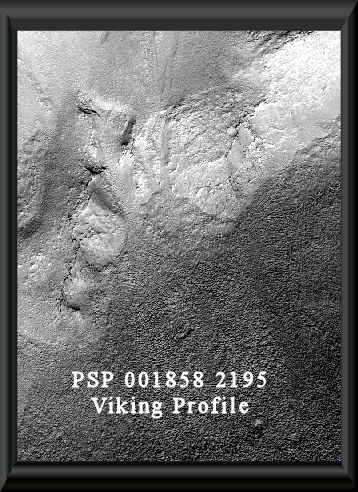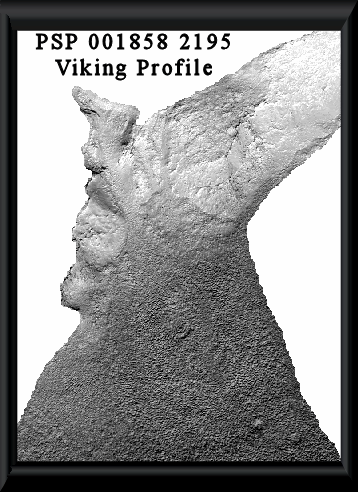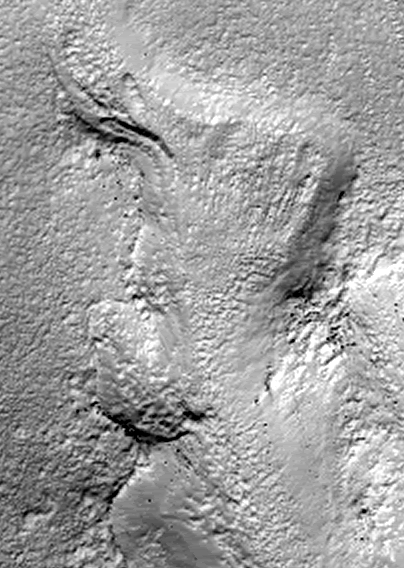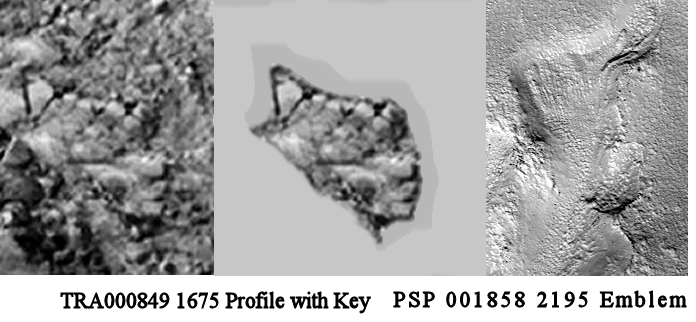- Thank you received: 0
Faces from the Chasmas
- neilderosa
-
- Offline
- Platinum Member
-

Less
More
17 years 5 months ago #20447
by neilderosa
Replied by neilderosa on topic Reply from Neil DeRosa
<blockquote id="quote"><font size="2" face="Verdana, Arial, Helvetica" id="quote">quote:<hr height="1" noshade id="quote">
www.ultor.org/pole3.htm
So the whole idea of Martian artifacts is slowly forming into a cohesive theory. For example most are near signs of water, and this was rare in Martian history. Being at similar latitudes in relation to this old pole might indicate a climate that had water at around 45 degrees north and south of the equator. This pole formed after the Argyre impact, which aliens might have created.
But all is still very vague and the real truth might be completely different, if there is anything artificial there at all. I think there is more evidence now than ever before, but much of what we thought was evidence years ago is likely wrong.[gorme]<hr height="1" noshade id="quote"></blockquote id="quote"></font id="quote">
This is a daunting task and we don't yet know if the authorities intend to re-image the really good possible artifacts imaged previously by the MGS MOC. But I encourage you in your efforts. You may be one of the few scientists currently making a serious effort in this area. I have a preliminary Catalogue in Microsoft Word and also a Slide Show of faces and other artifacts previously submitted to Meta Research by you and others, along with many I have found over the past two years. These include: crops of the artifact, brightness and contrast enhanced, background erased Keys, links to the original raw data source, image co-ordinates, and other data. Both are works in progress. There are over 60 artifacts, and I only included the more "probable" specimens, subjectively selected by myself, since I had no other reasonable means of making the selection. My criteria for selection was based on the Correspondence theory, along with other reasons I've explained on this Message Board, such as detail, proportion, orientation of secondary features, marks or signs of construction, and inclusion in mosaics.
Anyway, I can't post a link to them because I don't have a website to put them on yet. But I will send them to you and Peter, or anyone else who could make use of them, upon request. [Neil DeRosa]
www.ultor.org/pole3.htm
So the whole idea of Martian artifacts is slowly forming into a cohesive theory. For example most are near signs of water, and this was rare in Martian history. Being at similar latitudes in relation to this old pole might indicate a climate that had water at around 45 degrees north and south of the equator. This pole formed after the Argyre impact, which aliens might have created.
But all is still very vague and the real truth might be completely different, if there is anything artificial there at all. I think there is more evidence now than ever before, but much of what we thought was evidence years ago is likely wrong.[gorme]<hr height="1" noshade id="quote"></blockquote id="quote"></font id="quote">
This is a daunting task and we don't yet know if the authorities intend to re-image the really good possible artifacts imaged previously by the MGS MOC. But I encourage you in your efforts. You may be one of the few scientists currently making a serious effort in this area. I have a preliminary Catalogue in Microsoft Word and also a Slide Show of faces and other artifacts previously submitted to Meta Research by you and others, along with many I have found over the past two years. These include: crops of the artifact, brightness and contrast enhanced, background erased Keys, links to the original raw data source, image co-ordinates, and other data. Both are works in progress. There are over 60 artifacts, and I only included the more "probable" specimens, subjectively selected by myself, since I had no other reasonable means of making the selection. My criteria for selection was based on the Correspondence theory, along with other reasons I've explained on this Message Board, such as detail, proportion, orientation of secondary features, marks or signs of construction, and inclusion in mosaics.
Anyway, I can't post a link to them because I don't have a website to put them on yet. But I will send them to you and Peter, or anyone else who could make use of them, upon request. [Neil DeRosa]
Please Log in or Create an account to join the conversation.
- neilderosa
-
- Offline
- Platinum Member
-

Less
More
- Thank you received: 0
17 years 4 months ago #18332
by neilderosa
Replied by neilderosa on topic Reply from Neil DeRosa
It seems appropriate to use this thread to present those of Trinket's faces that seem to meet the criteria of my model of artificial structures on Mars. In this east oriented face there is a lack of secondary feature detail in the face itself, but at increased contrast and negative brightness setting we can see an apparently detailed headdress, a small face emblem above the forehead, good profile outline, and good bas-relief shading in the face and headdress, which may bear a "wing insignia," and a possible symbol "3" on the hood cloak. The cloak itself is flat art but is a different texture from the surrounding terrain, and this is made more apparent as we increase contrast and decrease brightness. The whole is proportioned and oriented correctly for a human face profile and bust. Size and location data to be posted later.
Here's Viking Profile, discovered by Trinket, and named by ZM (George Haas). ZM also described some of the characteristics and details noted above and others that he interpreted in Trinket's thread.
hirise.lpl.arizona.edu/PSP_001858_2195
Here's Viking Profile, discovered by Trinket, and named by ZM (George Haas). ZM also described some of the characteristics and details noted above and others that he interpreted in Trinket's thread.
hirise.lpl.arizona.edu/PSP_001858_2195
Please Log in or Create an account to join the conversation.
- neilderosa
-
- Offline
- Platinum Member
-

Less
More
- Thank you received: 0
17 years 4 months ago #18333
by neilderosa
Replied by neilderosa on topic Reply from Neil DeRosa
Here's a crop of the smallface emblem in the "crown" of the Viking profile. It shows several clear markings of a sculpture; clean outline all around, smooth well rounded, and evenly sloped and squared off back and top edge, scalloped hair/headpiece, eye detail, nose detail, and more; all in conjunction and context with an already imposing larger face.
The smallface is around 500 meters wide. The Viking profile is from 1 km to 1.5 km wide, a little larger than the Nefertiti Profile Image.
The smallface is around 500 meters wide. The Viking profile is from 1 km to 1.5 km wide, a little larger than the Nefertiti Profile Image.
Please Log in or Create an account to join the conversation.
- neilderosa
-
- Offline
- Platinum Member
-

Less
More
- Thank you received: 0
17 years 4 months ago #18359
by neilderosa
Replied by neilderosa on topic Reply from Neil DeRosa
One good line of evidence for artificiality is seen when we have repeated patterns presenting themselves in these faces. One oft-repeated pattern is a small face in the headdress, hair, or mosaic of a larger face, and of course sufficient detail and other objective indicators are needed to make this argument reasonably compelling in each case. There are many examples of this pattern, which the reader can access by searching the archives of the Artificial Structures topic of this message board, for the past year and a half.
Another repeated pattern, which has not yet been demonstrated convincingly, though some have tried, is when the same face or the same kind of face is seen in different places. Such an occurrence would be a compelling argument for anyone who is not fixated to the position or opinion that "it's all pareidolia."
Note the two "smallfaces" in the composite below, (though the new "emblem face" is actually a lot larger than the comparison face). The same kind of "babyface" style is apparent; the upturned nose, the same slope and sized forehead, the same relative proportions between the secondary features. The emblem face has been flipped to facilitate comparison. [Neil DeRosa]
Another repeated pattern, which has not yet been demonstrated convincingly, though some have tried, is when the same face or the same kind of face is seen in different places. Such an occurrence would be a compelling argument for anyone who is not fixated to the position or opinion that "it's all pareidolia."
Note the two "smallfaces" in the composite below, (though the new "emblem face" is actually a lot larger than the comparison face). The same kind of "babyface" style is apparent; the upturned nose, the same slope and sized forehead, the same relative proportions between the secondary features. The emblem face has been flipped to facilitate comparison. [Neil DeRosa]
Please Log in or Create an account to join the conversation.
- neilderosa
-
- Offline
- Platinum Member
-

Less
More
- Thank you received: 0
17 years 4 months ago #18365
by neilderosa
Replied by neilderosa on topic Reply from Neil DeRosa
I did a search of the MGS MOC images at the MSSS website to see if the Viking Profile had been imaged before; it is located at 39N, 116E (244W). It is definitely of a size that should have been visible to the MOC narrow angle camera. Although the unnamed crater in which the face is located, at more or less dead enter, is visible even in the low-res wide angle, context images, there were no narrow angle image swaths taken of the face by MOC, or at least none posted on the MSSS website.
Of interest to me here is that this image is somewhat north of the dichotomy border, in the Casius region, northeast of the Isidis basin, indicating perhaps that we can expect to see faces in any region of Mars, but that they still seem to be more prevalent in lower lying and protected areas such as the chasmas, or inside craters, but even that is not a hard, fast rule.
However since this newly discovered face fits fairly well into the "sufficient detail," requirement, and also the "theme," requirement, and it is also within the usual size range of most faces; I thought it would be a good idea to look at it more closely, especially since we now have an MRO image at the highest resolution of .25 m/p. [Neil DeRosa]
(As a side note: in the early days of discovery of artificial structures on Mars, some had referred to the Cydonia face as the "Viking Face" because it was imaged first by the Viking Orbiter 1n 1976. That was why I took care to use ZM's designation of the face as "Viking Profile," and not "Viking Face." )
Of interest to me here is that this image is somewhat north of the dichotomy border, in the Casius region, northeast of the Isidis basin, indicating perhaps that we can expect to see faces in any region of Mars, but that they still seem to be more prevalent in lower lying and protected areas such as the chasmas, or inside craters, but even that is not a hard, fast rule.
However since this newly discovered face fits fairly well into the "sufficient detail," requirement, and also the "theme," requirement, and it is also within the usual size range of most faces; I thought it would be a good idea to look at it more closely, especially since we now have an MRO image at the highest resolution of .25 m/p. [Neil DeRosa]
(As a side note: in the early days of discovery of artificial structures on Mars, some had referred to the Cydonia face as the "Viking Face" because it was imaged first by the Viking Orbiter 1n 1976. That was why I took care to use ZM's designation of the face as "Viking Profile," and not "Viking Face." )
Please Log in or Create an account to join the conversation.
17 years 4 months ago #18369
by Trinket
Replied by Trinket on topic Reply from Bob
<font color="limegreen">indicating perhaps that we can expect to see faces in <font color="red">any</font id="red"> region of Mars</font id="limegreen">
Now if we can just get you to change the word any to all, we will be making progress..
Show me any area without art.. And I'll show you where your wheels left the road..
Now if we can just get you to change the word any to all, we will be making progress..
Show me any area without art.. And I'll show you where your wheels left the road..
Please Log in or Create an account to join the conversation.
Time to create page: 0.461 seconds




